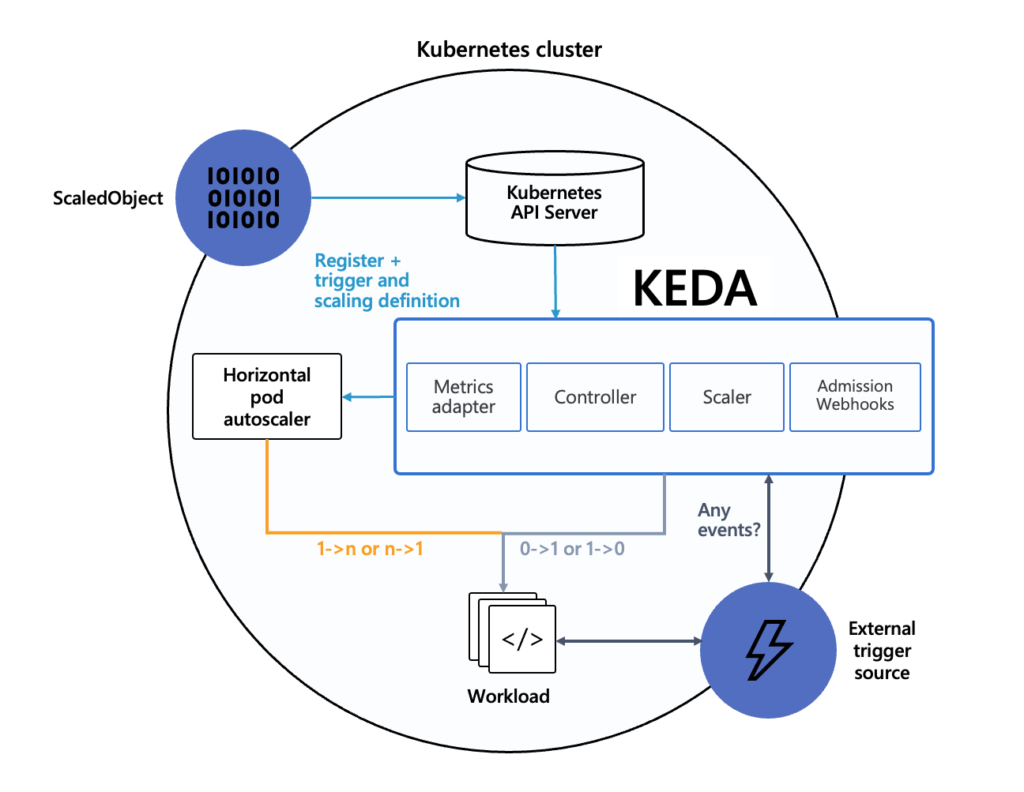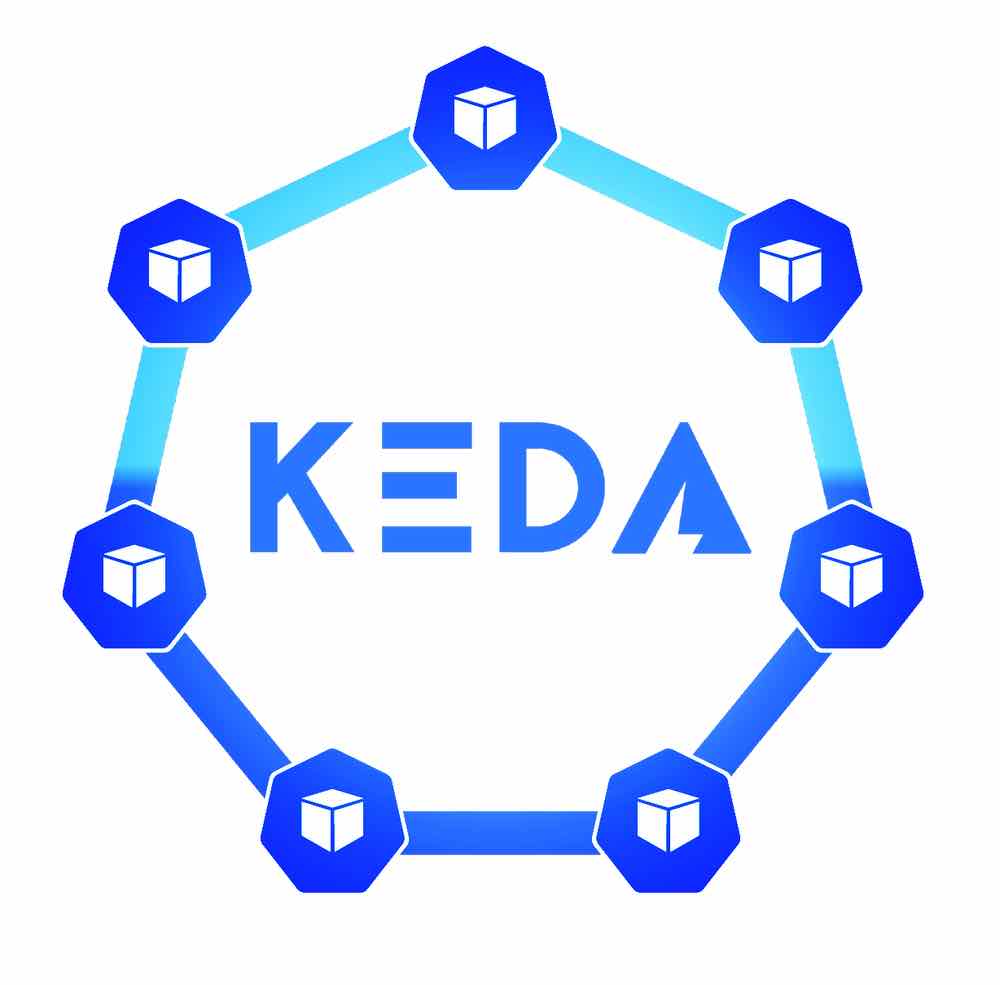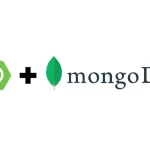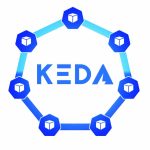Kubernetes has revolutionized container orchestration, offering unprecedented flexibility and scalability for containerized applications. However, efficiently managing scaling operations based on various triggers and metrics can be complex. Kubernetes Event-Driven Autoscaling (KEDA) steps in as a game-changer, providing a streamlined solution to automatically scale applications based on real-time event data. In this three-page article, we will delve deep into KEDA, exploring its core concepts, use cases, and how it transforms the way we manage scalability within Kubernetes environments.
Understanding the Need for Scalability
In today's fast-paced digital landscape, the ability to scale applications quickly and efficiently is a critical requirement. Applications must be capable of handling sudden traffic spikes, adapting to changing workloads, and optimizing resource usage to reduce operational costs. This is where Kubernetes, an open-source container orchestration platform, shines. However, Kubernetes alone isn't always equipped to handle the complexities of scaling applications in response to various events.
Kubernetes Event-Driven Autoscaling
KEDA, short for Kubernetes Event-Driven Autoscaling, is an innovative open-source project that enhances Kubernetes' scalability capabilities. At its core, KEDA enables autoscaling based on external events or metrics, ensuring that your applications can dynamically adjust their resource consumption to meet demand. It's a powerful solution that bridges the gap between Kubernetes and the world of event-driven computing.
How KEDA Works
KEDA operates by acting as an event-driven manager within your Kubernetes cluster. It connects to external event sources, such as message queues, HTTP endpoints, databases, and custom metrics, to gather data. This data is then used to drive scaling decisions for your application workloads. KEDA continuously monitors these event sources, making real-time adjustments to your application's pod count as needed
KEDA's Key Features
KEDA offers several key features that make it a valuable addition to Kubernetes environments:
- Wide Event Source Support: KEDA supports a broad range of event sources, making it versatile and adaptable to various use cases.
- Custom Metrics: You can define custom metrics for scaling, allowing you to fine-tune how your applications respond to specific events.
- Efficient Resource Utilization: KEDA ensures that resources are allocatedonly when necessary, optimizing resource utilization and reducing costs.
- Automatic Scaling: KEDA automates the scaling process, freeing you from manual intervention during traffic spikes or lulls

Understanding the Need for Scalability
KEDA’s versatility makes it applicable to a wide range of use cases:
- Microservices: Scale individual microservices based on their specific event triggers, ensuring optimal resource allocation.
- Serverless Computing: Enhance serverless applications with the ability to scale seamlessly in response to incoming events.
- IoT Applications: Handle IoT workloads efficiently by scaling based on sensor data or device interactions.
- Message Processing: Automatically scale applications processing messages from queues or event hubs, maintaining responsiveness even under high load
Implementing KEDA in Your Kubernetes Environment
Getting Started with KEDA
To start leveraging KEDA in your Kubernetes environment, you’ll need to:
- Install KEDA: Begin by installing KEDA into your Kubernetes cluster. It’s a straightforward process that usually involves applying custom resource definitions and deploying the KEDA controller.
- Configure Event Sources: Identify the event sources relevant to your application, such as Apache Kafka, Azure Functions, or RabbitMQ.
- Define Scaling Rules: Specify how KEDA should scale your application pods based on the data it collects from event sources. You can set threshold values and determine scaling behavior.
- Monitor and Fine-Tune: Continuously monitor the performance of your applications and the effectiveness of KEDA’s scaling rules. Adjust configurations as needed to optimize scalability.
KEDA Ecosystem and Future Developments
KEDA has gained traction in the Kubernetes ecosystem, with integrations and partnerships that enhance its capabilities. As the Kubernetes landscape evolves, we can expect further developments in KEDA’s features and support for additional event sources and use cases.
Kubernetes Event-Driven Autoscaling (KEDA) represents a significant leap forward in the world of Kubernetes orchestration. It empowers organizations to build applications that can seamlessly scale in response to real-time events and metrics, ensuring performance, cost-efficiency, and reliability. As businesses increasingly rely on Kubernetes for container orchestration, KEDA emerges as a vital tool to meet the demands of modern, scalable applications. By bridging the gap between Kubernetes and event-driven computing, KEDA paves the way for a more dynamic and efficient future in application scalability.
- By admin2308





